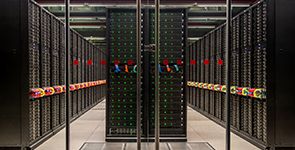Context
Digital transformation brings many opportunities to society. However, it also entails an increase in energy consumption due to using devices, distribution networks and data centres. Cloud Computing (services) currently represents more than 1% of global energy consumption, growing at 7% per year. The annual energy consumption of Spain is 264.4TWh (Spanish Electrical Network, 2019).
To face the climate emergency, one strategy is to measure and reduce the environmental footprint of companies in the technology sector, both in the public and private sectors. This means making their products, services and/or infrastructure carbon neutral. Innovative technologies can help to improve and optimize energy consumption and thus, reduce its environmental impact.
The solution
UOC team:
Xavi Vilajosana Guillen (R+D+I researcher, professor),
Borja Martínez Huerta (Transfer and Innovation)
Reduction of energy consumption: To check that the implementation of the tool generates a reduction in energy consumption through a) the information it provides and b) guides and recommendations that will be generated. This objective will be measured by analysis of:
– the variation of accumulated consumption (MWh)
– computational costs (€)
– the carbon footprint (CO2)
Awareness: To generate social and media awareness about the growing environmental impact of cloud computing and the importance of a responsible use.
The pilot
The pilot was carried out between December 2020 and September 2021. The digital tool, the energetic footprint of cloud computing (EFC), was tested to measure the energy consumption of the UOC’s virtual campus. The tool was installed on the University’ servers. A total of 72,000 users participated in the pilot.
A widget was developed and implemented on the campus, visible to each user. It showed the consumption related to the user’s activity in the virtual space of the campus with some tips on how to reduce their computational consumption and generate a minor environmental impact.
The impact of this tool on the users was evaluated through AB tests with three levels of information and different types of detail. At the same time, it was possible to obtain information regarding the costs of the platform related with the hiring of “on premise” servers and the use of external computational resources. This information enabled to analyze the possibilities of optimizing costs of the campus from an economic and environmental perspective.




